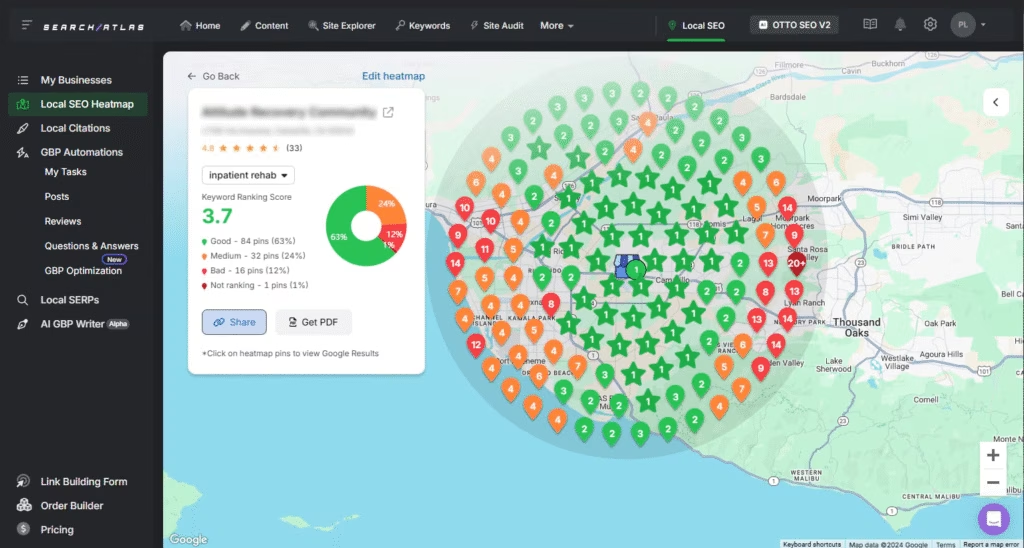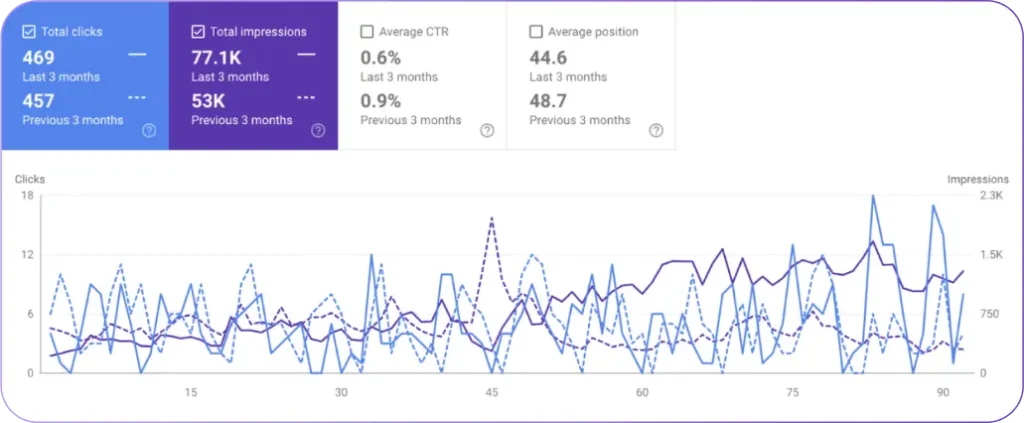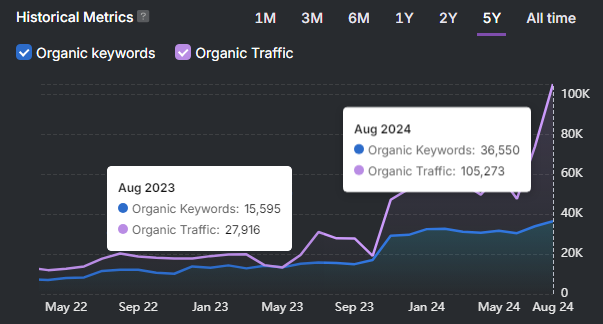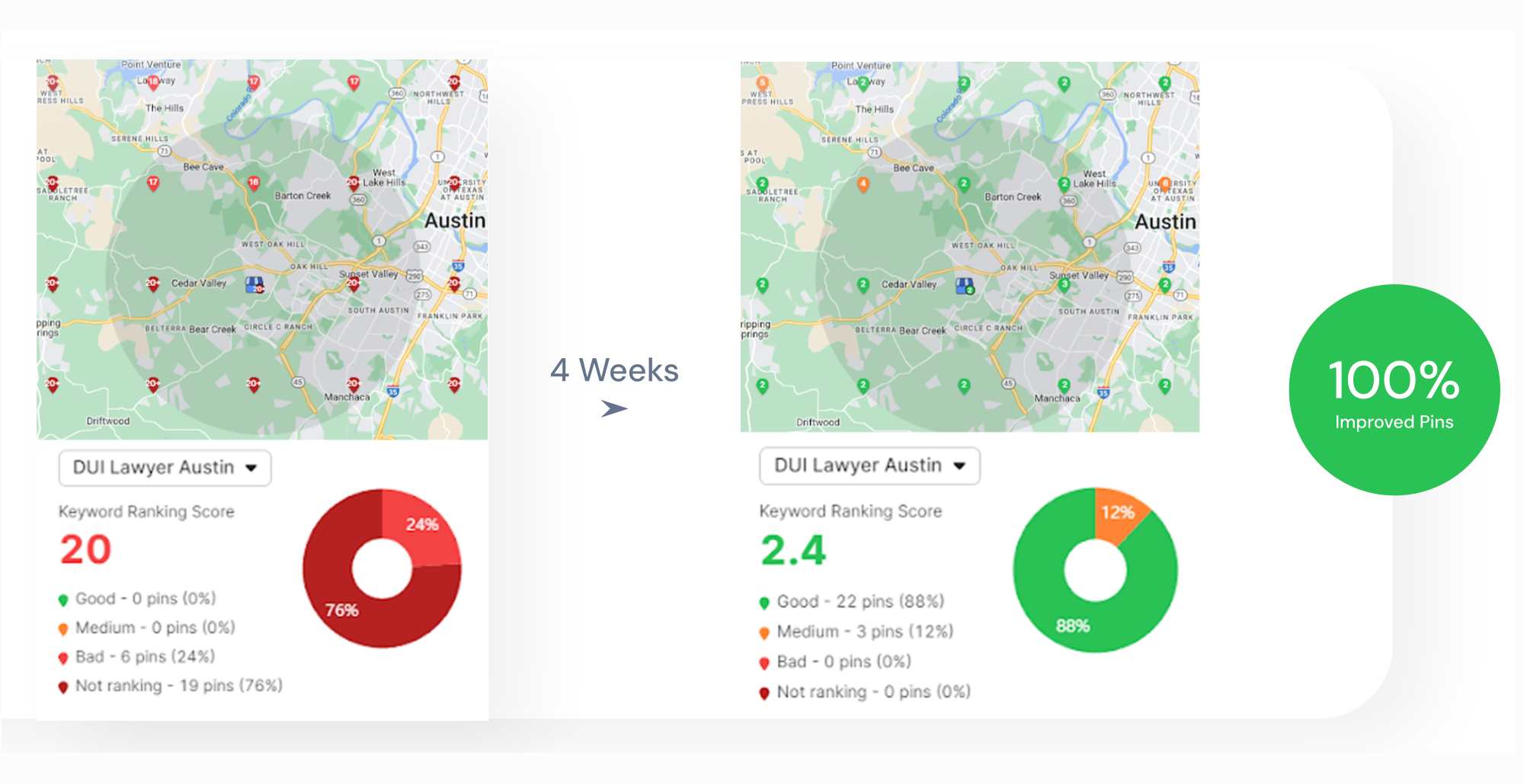I went full data-nerd and analyzed over 28,000 grid snapshots of Google Business Profile rankings over several months, tracking thousands of local keywords across industries. 🤓
Rankings swing. Updates drop. Visibility disappears overnight.
I wanted to understand why and which keywords are behind those wild shifts.
What Did We Discover?
So I built something that acts like a heartbeat monitor for your local SEO.
We gave every keyword a daily volatility score (standard deviation of their pin positions), then compared that pulse to the broader SERP volatility.
What we found?
Some keywords are weather vanes for the algorithm. Others? Total rocks. Here’s the breakdown.

Which Keywords Moved and Which Stayed?
Keywords that mirror SERP volatility
Keywords like “roofing contractor”, “SEO agency”, and “dentist near me” showed strong positive correlation with global volatility.
These keywords move with the market. When volatility spikes, their rankings swing, making them early indicators of SERP changes.
Keywords that resist turbulence
Terms like “plumbing”, “med spa”, and “digital marketing” showed negative correlation.
These stay stable even when the SERP shakes. That makes them great anchors for consistent performance.
Visual Insights
Our charts don’t just show correlations — they use –log₁₀(p-value) to highlight statistical significance. Darker colors = more trustworthy signals.
Timeline view
We mapped 12+ months of global SERP volatility and overlayed keyword-specific volatility spikes. The result?
- Red bars (keyword volatility spikes) align with global volatility peaks.
- This means some keywords don’t just follow the market — they lead it.
Why Does This Matter for Your SEO Strategy?
Here’s what this analysis unlocks:
- ✅ Predictive SEO: Now we know which keywords serve as early warnings for SERP shakeups. If “roofing contractor” starts swinging wildly, you might expect volatility in similar verticals.
- ✅ Keyword Segmentation by Sensitivity: Not all keywords respond the same way to algorithm updates. You can now classify your target terms as sensitive or stable and adjust campaigns accordingly.
- ✅ Better Forecasting and Monitoring: Volatility signals allow us to build smarter dashboards, prioritize content updates, and optimize local paid campaigns with more precision.
What’s Next for Local SEO?
This project taught me a lot. Not just about volatility… But about how to measure it in a way that’s scalable, repeatable, and immediately useful.
Like any study, it has limitations.
Correlation isn’t causation, and some sectors behave differently than others. But the methodology lays the groundwork for building real-time volatility alerts, more robust SEO segmentation models, and even predictive tools to stay ahead of Google’s algorithm.
Next, I plan to incorporate SERP feature shifts (like map pack appearances), explore seasonal dynamics, and layer in brand vs. non-brand keyword behavior.
If you’re serious about local SEO, this is your roadmap to deeper insight and smarter action.











